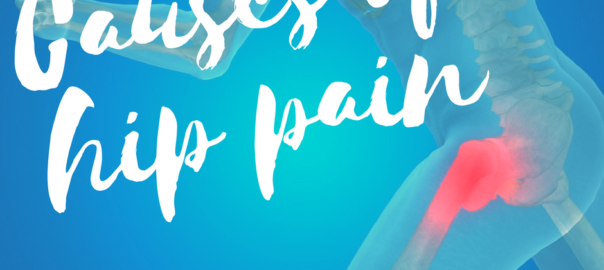A little anatomy of the hip…
The hip is what is called a ball and socket joint.

This type of joint allow for a ton of movement. In between the joint is a capsule and cartilage that protects and joint and allows for the movement. The hip is not actually connected to your low back as you can see in the image. But, the ileum which is what the hip snuggly fits into, connects to the sacrum, which has a huge connection with the back.
There are also muscles around the hip joint, the iliacus connecting with the psoas to the low back.
A couple huge muscles to remember are the iliacus, gluteus medius and the piriformis muscles.


Now here are a couple big points with the hip. When you have tension in your head (cranial compressions), the tissue that surrounds the brain will tighten. This causes the ENTIRE tissue (surrounds your spinal cord) to tighten all the way down to the tailbone (sacrum). When the sacrum tightens, the muscles including the iliacus and psoas tighten, and causes the hips, usually one side more than the other to be extremely tight.
If this is the cause… It doesn’t matter how much you stretch out those muscles, they will come right back. Also, it doesn’t matter how much you get your pelvis adjusted, the tightness can return unless you fix the tension in the head. You have to work at both ends for effectiveness.
*Remember its not always stretch, stretch, stretch a tight muscle. If it’s continuously tight, there is a reason. It’s usually protection.
Another culprit of hip dysfunction can come from a misdiagnosed pelvis sprain. This happens all too often in my practice. But, when the pelvis is unstable, the entire body will be unstable, including the hip.
Why is this so common? Well women in general have looser pelvic ligaments because of bearing children. However, a big culprit is our society for everyone is Sitting.
The third, and what I’ve seen multiple times these few weeks is also about the glute muscles. Mainly the glue medius muscle, which is on the side of the hip. This muscle has a strong connection with the ovary/testes. This being because the same nerves that go to these organs, innervate this muscle.
For some women during their cycle they can also experience more back pain and hip pain. This is because of some hormone dysregulation. This will then cause the glute muscle to shut off, and tighten. When it tightens, it pulls on the hips and can give you pain and discomfort.
The kidneys can also have dysfunction, which are linked with the psoas and iliacus. So if you are dehydrated, or need to flush out your kidney from exposure, then your hip can tighten.
There can also be a stress link of certain emotions being held with the glute muscles as well, this will usually result in both hips being tight and painful, not just one side.
——–
You can also have an anatomically short leg, which can cause hip issues. In this case, you would need a small heal lift in order to make sure you don’t wear down that joint.
If there is degeneration in the hip joint, with arthritis, it’s always a question of what is causing the inflammation. Look at the movers and supporters of the joint. If they aren’t functioning, then the joint won’t function well either, which will create inflammation. Or if it’s bilateral then you might need some nutritional support to help figure out the sources of the inflammation in your body. (HINT it’s always the GUT).
I hope this was helpful to you this week! The hip joint can be helped in numerous different ways, but if you find one side, or maybe both is just always tight, and you can’t get relief, you might be missing the big picture.

